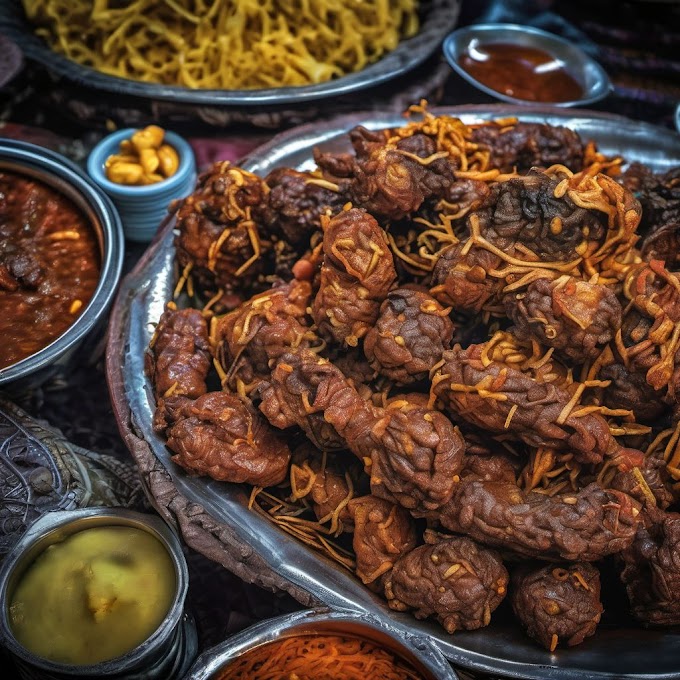
Spanish cuisine is a delightful and diverse tapestry of flavors, ingredients, and regional specialties, celebrated not only within Spain but across the globe. From the sun-kissed coasts to the rugged mountainous terrains, Spanish cuisine mirrors the country's varied landscapes, climates, and cultural influences. It's a journey through taste, deeply entrenched in tradition yet embracing modern innovations. Let's dive deeper into this enchanting culinary world that has captivated food enthusiasts for generations.
### Exploring the Culinary Marvels of Spain
#### 1. **Paella: A Valencian Icon**
Paella, often hailed as Spain's national dish, is a captivating rice-based dish that originated in the Valencian region on the eastern coast of Spain. The essence of paella lies in the artful blend of saffron, paprika, vegetables, and an array of proteins such as chicken, rabbit, seafood, or a combination of these. The rice is perfectly cooked in a wide, shallow pan, allowing for a crispy bottom layer, known as "socarrat," adding a delightful textural contrast to the dish.
#### 2. **Tapas: The Heart of Spanish Social Dining**
Tapas, small savory dishes, play a significant role in Spanish culinary culture. These bite-sized delights are a hallmark of Spanish dining, encouraging social interaction and a diverse range of flavors. The term "tapa" originated from covering a glass of wine with a small plate to prevent flies from contaminating the drink. Today, tapas encompass an extensive variety of options, from albondigas (meatballs) to gambas al ajillo (garlic shrimp), making it easy to sample and enjoy an assortment of flavors in one sitting.
#### 3. **Gazpacho: The Quintessential Spanish Cold Soup**
Gazpacho is a refreshing cold soup, a staple during the sweltering summer months in Spain. It originated in the Andalusian region and is a perfect amalgamation of ripe tomatoes, cucumbers, bell peppers, onions, garlic, and stale bread. The medley of flavors, often enhanced with a drizzle of olive oil and accompanied by a side of crusty bread, makes this a beloved dish across the country.
#### 4. **Sangria: Spain's Iconic Fruity Wine Punch**
Sangria is a beloved beverage synonymous with Spanish culture. It's a flavorful and refreshing mix of red wine, fresh fruits like oranges, lemons, and berries, sweetened with sugar, and often fortified with brandy or liqueur. This delightful concoction is a hit, especially during warm months, adding vibrancy to gatherings and celebrations.
#### 5. **Jamon Iberico: The Crown Jewel of Spanish Hams**
Jamon Iberico, the pride of Spain, is a premium cured ham made from the Iberian pig. The acorn-fed variety, Jamon Iberico de Bellota, is particularly esteemed for its exceptional taste and quality. The process of curing, which can extend for several years, imparts a distinct and intense flavor, making it a gastronomic delight.
### A Gastronomic Journey Across Spanish Regions
#### 1. **Basque Cuisine: A Gastronomic Frontier**
The Basque Country, known for its distinctive culinary heritage, offers a gastronomic experience that tantalizes taste buds. Basque cuisine places a strong emphasis on fresh, high-quality ingredients. Pintxos, a delightful variety of snacks often skewered on bread, are a highlight. Bacalao a la vizcaína (salted cod in a tomato and red pepper sauce) and marmitako (a tuna and potato stew) showcase the depth and complexity of Basque flavors.
#### 2. **Catalan Cuisine: A Fusion of Flavors**
Catalonia, in northeastern Spain, boasts a rich culinary tradition influenced by both land and sea. From the celebrated seafood paella de mariscos to the sweet and creamy crema catalana (a dessert similar to crème brûlée), Catalan cuisine is an artful fusion of flavors that captivates the senses. The region is also renowned for its butifarra amb mongetes, a delectable dish featuring sausage and white beans.
#### 3. **Andalusian Cuisine: A Tapestry of Tastes**
Andalusia, in southern Spain, is a region where culinary traditions are deeply rooted in history. Gazpacho and salmorejo, both cold soups, provide relief during the scorching summer, while pescaíto frito (fried fish) and salmorejo garnished with hard-boiled eggs and jamon offer a delightful contrast of textures and flavors.
### Historical and Cultural Influences on Spanish Cuisine
#### 1. **Moorish Legacy: A Flavorful Inheritance**
One of the most profound influences on Spanish cuisine comes from the Moors, who dominated the Iberian Peninsula for centuries. They introduced an array of ingredients, including almonds, citrus fruits, rice, and a variety of aromatic spices such as saffron and cumin. Dishes like arroz con pollo (rice with chicken) and turron (almond nougat) are among the many culinary treasures inherited from this era.
#### 2. **Jewish Influence: An Enduring Culinary Imprint**
The Jewish community, with its rich culinary traditions, significantly contributed to Spanish cuisine. Dishes like albondigas (meatballs) and caldo de cocido (a hearty stew) showcase the flavors and cooking techniques rooted in Jewish culture.
### Modern Innovations and Culinary Revolution
In recent decades, Spain has experienced a gastronomic revolution, with modern chefs experimenting with traditional recipes and pioneering new culinary techniques. Renowned chefs like Ferran Adrià, Joan Roca, and Jose Andrés have propelled Spain to the forefront of global gastronomy through innovative approaches and avant-garde creations.
### Conclusion: A Culinary Voyage Through Spain
Spanish cuisine, with its rich diversity and depth of flavors, is a journey through history, culture, and tradition. From the savory delights of paella to the communal joy of tapas, each dish is a testament to the country's vibrant culinary tapestry. The regional variations add an extra layer of fascination, offering a glimpse into the





%20(1).png)

